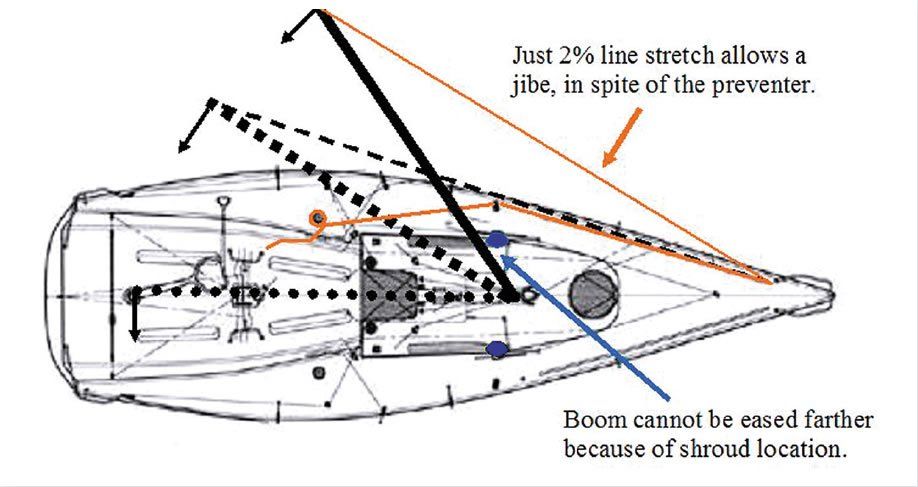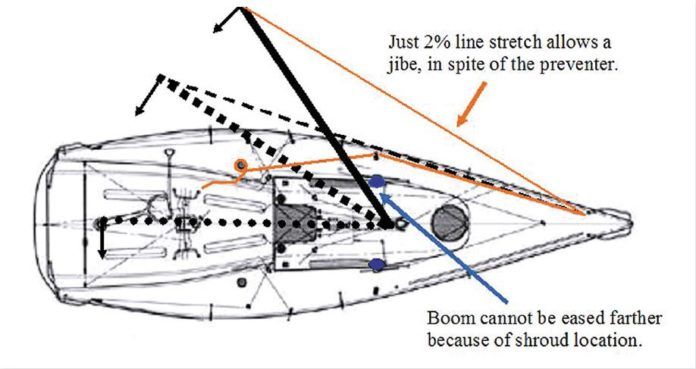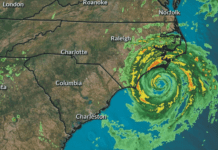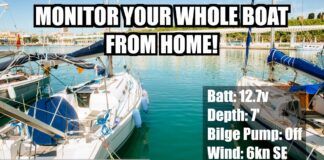Ideally, you don’t put yourself in a position where an accidental jibe can happen, but even an experienced sailor can get caught off guard by sudden, violent wind shifts in mountainous coastal areas or in night-time squalls. The most common way to take the fright out of an unintentional jibe involves a preventer, something weve examined in a number of previous reports. Preventers are especially useful when sailing deep downwind in rolly conditions, when exaggerated yawing lets the wind sneak behind the mainsail.
Although preventers are commonly used offshore, they are often misunderstood. Some advice weve seen on the Web is dangerous. There are various ways to rig a preventer line:

1. On a small boat you can relocate the fiddle block with cam cleat on your soft multi-purchase boomvang to the outboard rail, forward of the boom. This will hold the boom down and prevent a jibe. A drawback to this approach is that you will likely have to go forward to release the cam cleat if the mainsail gets backed. A bigger problem is that if the boom dips in the ocean it can bend or break, which is why a bungee of some sort to absorb shock loads is critical if you use this approach. We don’t recommend a mid-boom preventer offshore.
2. Rig a temporary end-boom preventer leading to the bow and back to the cockpit. The problem with this approach is that you have to reach the end of the boom to attach the line, potentially dangerous when a sea is running.
3. Our preferred approach is one in which two long preventer pendants (one for each tack) that are slightly shorter than the boom are attached at the boom end and stowed along the boom. When it is time to rig the preventer, the pendant is slipped off the horn cleat near the gooseneck and attached to a pre-rigged preventer control line run through a lead at the bow and back to the cockpit. Offshore sailor and past PS contributor John Harries has a video illustrating the use of this arrangement, here: https://goo.gl/XPOAuh
Practical Sailor archives has a number of related articles, including details on setting a preventer:
Headings: The Academy of the Sea, PS September 2004
Offshore Log: Return to the Tropics PS February 2002
Ocean Testing the Best Sailing Gear, PS January 2007
Solid Vang Showdown, February 2006
Swept back spreaders
One detail that is often overlooked in discussions regarding preventers is that swept-back spreaders increase the risk of an accidental jibe while sailing dead down wind. They also make rigging an effective preventer challenging. On a boat with deeply swept back spreaders, like some catamarans, and monohulls without backstays (B&R rigs) the problem is exacerbated.
In recent tests carried out by Practical Sailor, we found that if the preventer line stretches just two percent, the mainsail on a boat with deeply swept back spreaders is liable to backwind. The problem is caused by a combination of two factors: first the tighter sheeting angle on the boom makes it more vulnerable to backwinding; second, the practice of running the control line back to the cockpit makes the line longer, which allows more stretch.
A boat with this configuration might consider using polyester line. Dyneema will stretch even less than, but the stretch in polyester line may be just enough to the keep the boom from breaking.





































